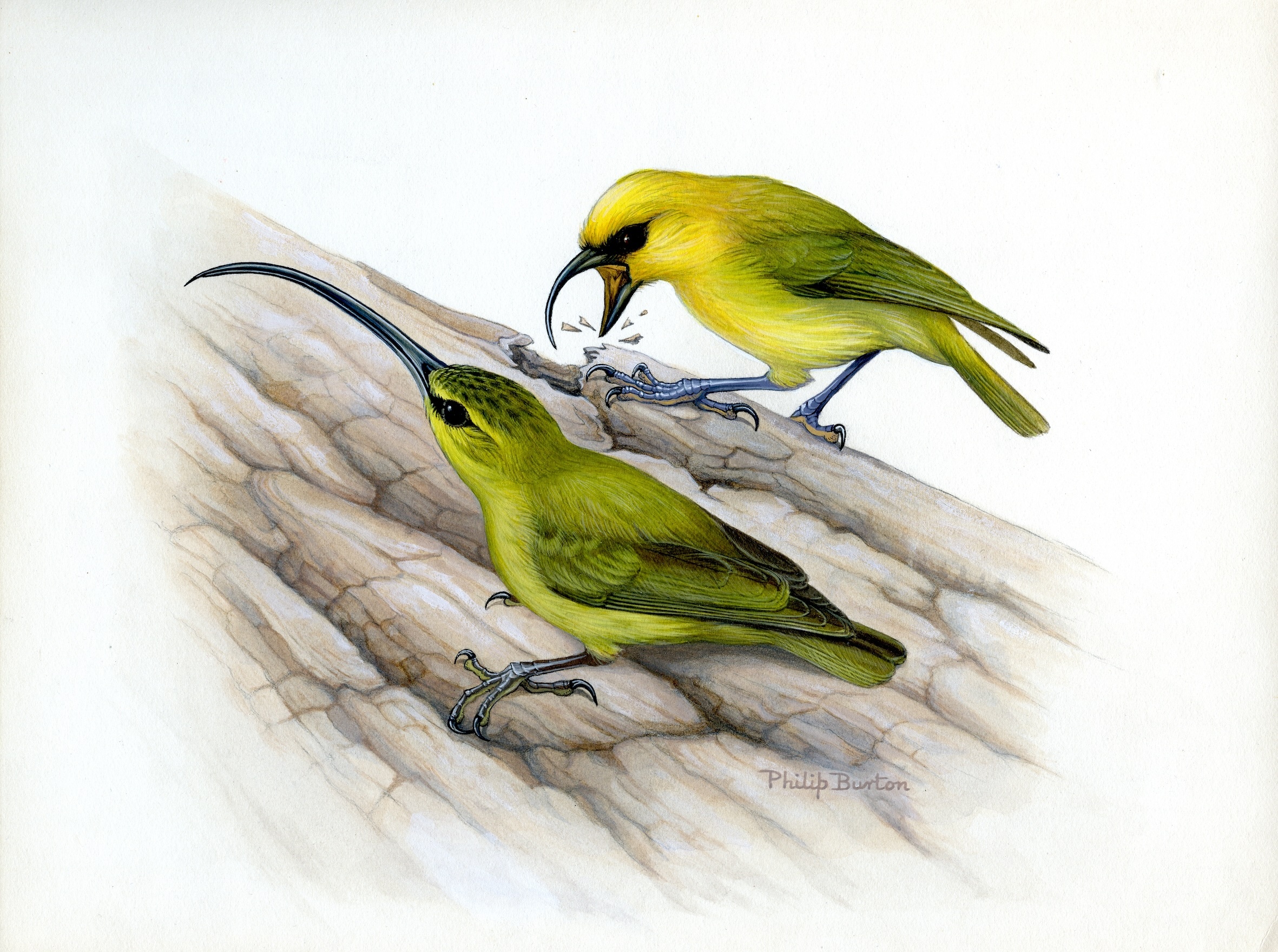
Philip Burton 1936–2023
SWLA Founder member
Philip John Kennedy Burton was born on 9th January 1936 in Highgate, north London and attended Finchley Grammar School. His interest in birdwatching began in the local countryside and took him to the coastal marshes of Essex, where he developed an early passion for geese and wildfowling. His notebooks from that time, filled with field sketches in ink and pencil, reveal the development of his self-taught artistic ability.
Phil went to University College London, to study Zoology, and during this time began to travel abroad. He organised expeditions to Denmark, Lapland and Spitsbergen in search of geese, and following university, with his wife, Jennie, joined an expedition to the South Caspian Sea in modern day Iran.
After a start as a biology teacher, Phil joined the Natural History Museum in 1967, and completed a PhD at the University of London investigating the feeding anatomy of waders in 1969. Phil was integral to the transfer of the bird collections from London to the newly built facilities at Tring, and transferred there in 1971, becoming a Principal Scientific Officer, with the family moving to nearby Berkhamsted. At Tring, Phil was responsible for the museum’s bird anatomical collections, particularly the spirit collection which was the focus of his cranial anatomy research. In addition to his work on waders and other waterbirds, he produced a landmark analysis of the anatomy of the extinct New Zealand Huia. Phil took part in several museum expeditions, including the Darien Gap Expedition to Panama in 1972 and others to Guyana, Sabah, Sarawak, Australia, Indonesia and Papua New Guinea.
Beyond the museum, Phil achieved considerable recognition as an artist and author. He was a founder member of the Society of Wildlife Artists in 1964, with early work in a range of media, including oil, and he had a detailed precise style reflective of his knowledge of birds, honed by years of anatomical work. His popular writing included ‘The Birdlife of Britain’ with Peter Hayman, and ‘Birds of Prey of the World’ with Trevor Boyer. He was particular noted for his work as an illustrator, produced in acrylic and which included leading work and notable contributions on nestlings in ‘Collin’s Field Guide to Bird Nests, Eggs and Nestlings’, waders in ‘Birds of the Western Palearctic’, New World vultures and falcons in ‘Raptors of the World’ and kingfishers, rollers and bee-eaters in ‘The Birds of the Thai-Malay Peninsula’.
Throughout his career and after retirement, his outside interests continued and deepened. Through his Brent Goose surveys in Essex he became one of the first organisers of the national Estuaries Survey in the 1960s. He was a British Trust for Ornithology bird ringer and nest recorder from 1953, developing long-running projects on farmland birds of prey, and a founder committee member of the Buckinghamshire Bird Club and Vice-Chairman of the Hawk and Owl Trust. In his later years, he returned once more to non-illustrative work, working primarily in acrylic and using field sketches and photographs as reference, exhibiting regularly at SWLA.
Niall Burton